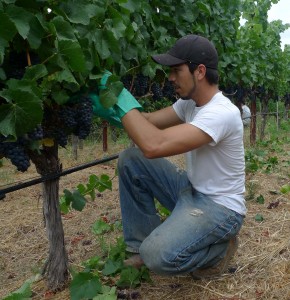
A vineyard worker in the Anderson Valley is also in a local mariachi band.

The Terrace Park Cemetery in Holtville is actually two cemeteries in one. The one next to the road looks pretty typical: there’s a lush lawn, trees that attract birds, and gravestones with flowers. Tucked behind that is the pauper’s cemetery, where unclaimed and unidentified bodies are buried. Because Holtville is only sixteen miles from the Mexican border, most of the people buried here are undocumented immigrants who died trying to cross the border. (aired on The California Report and NPR’s Latino USA September 2011)

A top student in the law enforcement training program on why she doesn’t want to become a Border Patrol agent.
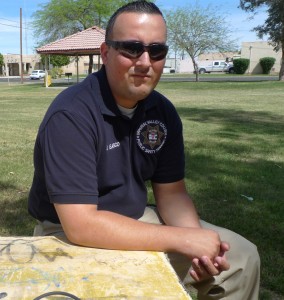
David Velasco is a student in the Administration of Justice program at Imperial Valley College, the most popular major at the college.

Full Story
For outsiders, Mendocino County’s Boonville used to be a “blink-and-you-miss-it” spot along Highway 128. Through the years it’s been home to sheep ranchers, apple farmers and marijuana growers. But recently, Pinot Noir grapes have put Boonville and the Anderson Valley on the map — and that has some residents worried. (aired on The California Report Dec 2010)

Full Story
Lindsay is a Central Valley town of 12,000 built up around olive and citrus groves. Twenty years ago, a state-wide freeze signaled the start of a series of events that crippled Lindsay’s economy. But the town buried its troubled past and forged a new identity. (aired on The California Report Nov 2010)
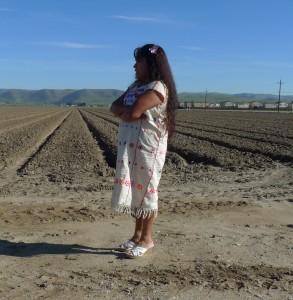
In the small farm towns of Salinas Valley, an increasing number of residents are indigenous Mexicans. They speak Mixteco, Zapoteco, and Triqui; Spanish is a second language, if it’s spoken at all. That can create complex language barriers, which Natividad Medical Center is working to break down. (aired on The California Report, Latino USA Feb 2013)
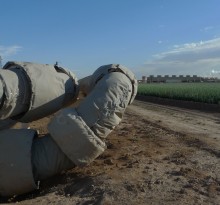
Full Story
Calipatria sits in California’s southeast corner, in Imperial County. Many of the town’s residents rejoiced in April, 2011 when Gov. Jerry Brown signed into law a requirement that by 2020, the state get over 30 percent of its electricity from renewable sources. They hope the region’s natural resources will lead this hard-hit county into economic recovery, but some here worry that education and training lags behind. (versions aired on The California Report May 2011, and on NPR’s Latino USA Nov 2011)
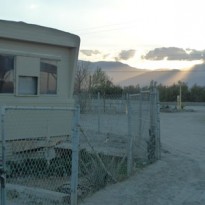
Southern California’s Coachella Valley is a study in contrasts. To the West lie Palm Springs and other desert resort towns. But it’s farms, not golf courses, that dominate the Eastern Coachella Valley. Here, the land is rich, but most of the people are not. It’s home to an estimated 15,000 farmworkers, for whom housing has always been a problem. Though the county and housing non-profits built thousands of permanent homes, thousands more families are still on waiting lists. Mobile home parks have become the defacto solution.
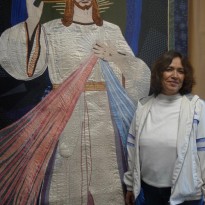
Full Story
In the grape-growing region of California’s Anderson Valley, a group of Latina immigrants turn stories of hardship into beautiful quilts as part of a group called “Los Hilos de la Vida” or Threads of Life.
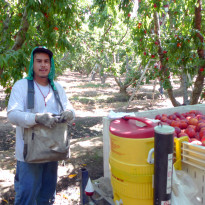
There’s been some record-setting heat around California this summer — it’s more than just an annoyance for those who can’t take refuge because the outdoors is their office. In July, when temperatures in California soared above 100 for almost three weeks, three farm workers died. State regulators are investigating those deaths to see if employers violated heat illness prevention laws.
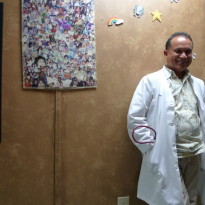
Rural California has long faced a shortage of doctors, and in the San Joaquin Valley studies show the number of primary care physicians per person is about half the state’s average. But here and there, you can find physicians who really commit to their communities. We meet a couple of dedicated rural physicians, and a collaboration to cultivate more doctors like them.
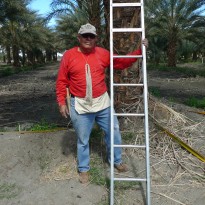
It’s said that date palm trees want their feet in water, and their heads in fire. It makes sense, then that more than 90% of the dates harvested in the U.S. grow in California’s Eastern Coachella Valley. Irrigation water’s pumped here from the Colorado River, and summer temperatures can top 120 degrees. Reporter Lisa Morehouse spent some time in the Eastern Coachella Valley this spring, and got curious about the history of dates here, and about the palmeros, palm workers, who tend them.
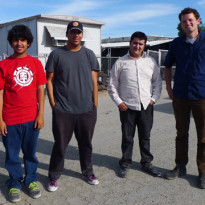
It’s just 40 miles from Palm Springs, but the Eastern Coachella Valley is home to a host of environmental concerns, ranging from arsenic in the well water to toxic dump sites. The people who live there are predominantly poor, Latino and farmworkers. Increasingly, however, young people are joining the ranks of community activists working toward environmental justice, and they’re doing it through crowdsourcing and other technology.